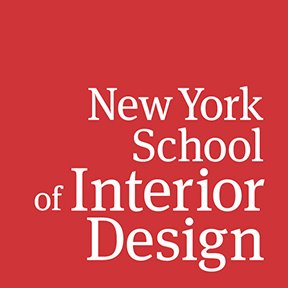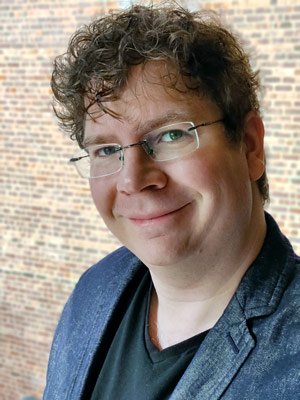Shaun Fillion of NYSID on the Best Applications for AI in Lighting Design
Shaun Fillion, LC, LEED Green Associate, Educator IALD, CLCP, director of NYSID’s Master of Professional Studies in Lighting Design, says only 6% of architecture and design firms have formalized ways to integrate AI into practice, based on a 2025 AIA study. When it comes to the application of AI in lighting design, it’s still a bit of the wild west in the industry, meaning it’s an area of great opportunity both for firms and individuals. Fillion, director of lighting design at RAB Lighting, recently gave the talk “AI in Action: Successful Applications in Architectural Lighting Design” at LightFair, North America’s largest lighting trade show and conference, on May 5 in Las Vegas. Fillion is past chair of the IES Progress Committee, and serves on the board of managers of the Designers Lighting Forum of New York, the LEDucation committee, and as chair of the IESNYC Student Lighting Competition Committee. As one of the most respected lighting educators in the profession, he is integrating AI into the lighting design curriculum at NYSID. Here’s what he has to say about using AI effectively and responsibly for creative processes.
NYSID: What is AI really good at? What are the best applications of AI in your profession?
Shaun Fillion: There are different types of AI. I like to think of them as different flavors. The AI that people are most used to thinking about right now are Chatbots, such as ChatGPT or Claude. They are natural language processing systems and are very good at tasks that include summarizing, writing text, and sharpening text to make it sound like your company’s voice.
I'm more interested in exploring the use of AI for visual and three-dimensional volumes of space and for image generation. A few years ago, I had the pleasure of attending the American Institute of Architects’ symposium on AI. There was a great talk by architects from Zaha Hadid Architects (ZHA). The architects at ZHA were loading their vast archive of images, drawings, and details into an image generating AI called a GAN (Generative Adversarial Network). Examples of GANs include Midjourney and Dall-E. ZHA fed decades of their work, including thousands of the late Zaha Hadid’s renderings, into this processor. The team at ZHA would get renderings and tweak those renderings to generate images for proposals. Eventually, they could use their system to generate renderings in the style of ZHA at incredible speed. The firm claims that renderings can now be produced in 20% of the time previously required. This is the power of AI.
AI is very much driven by the content you feed it. When you start to restrict what is input into your processor (in what is known as a walled garden AI), you can exhibit some control over the integrity of what comes out. With AI, if the information you feed it is “junk” such as advertorial or misinformation, then your results will be junk, so it’s important to control the input. If you are feeding the AI peer-reviewed white papers or renderings that meet your college’s standards, for example, the results will be better. There is tremendous potential for educational institutions, industry organizations, and firms in the model ZHA provided.
Image that Shaun Fillion made in Midjourney with the prompt, "Create a multifamily in the style of Zaha Hadid Architects”
Is the main benefit of AI in lighting design speed?
I’d use the word efficiency. It can enhance creativity as well.
What are some of the challenges of integrating AI into your practice?
One of the big problems with using AI is that it doesn't necessarily attribute its sources. You will often get content spat back at you with no citation of the source or crediting of the creators. There is an intellectual property question with this, not to mention the fact that understanding the source and process are the building blocks of a designer’s knowledge. So one of the skills I want to teach my students is how to write prompts that help them cite sources and eliminate bias, which I think is critical.
I’ve experimented with DeepSeek, a newer AI out of China that caused a stir for a number of reasons, one of them being security concerns. The aspect of DeepSeek I find the most disruptive and useful is that it shows its work, not just the sources, but the steps it’s taking to arrive at a solution. After DeepSeek’s launch, other AI competitors also began to show their work. I expect this will become a standard feature and will improve our understanding of how AI arrived at the responses it provides to us.
Will you give me concrete examples of how you have used AI in your practice and/or teaching?
The AI image generation tool I use most often in my work is MidJourney. Right now, I'm working on an approach to bring lighting programs to elementary schools. It is essentially an enrichment program for Title 1 schools in New York City, involving some of NYSID’s recent graduates. In order to pitch this program to potential funders, we needed images that show 10-year-old students interacting with circuits and playing with lights, images that would be incredibly challenging to orchestrate or get permissions for. This was a great use for AI, for which we could write specific requirements, for example: Give me images of 10-year-olds students in a classroom, with a teacher and a smart board, working on circuits and learning about direct current, with lighting. And we got very successful images which we could incorporate into our presentations for funding requests. In a related sense, a lighting student or an interior designer could potentially take renderings they've created, their own sketches and graphic renderings that have models in them, not real people, and ask the AI: Can you make this look realistic? Can you generate people in here that occupy the space and use the lighting? It's amazing how fast that's improving. I encourage my students to have the AI generate iterative design ideas off of a sketch of their own that they upload, versus doing multiple versions themselves, and then they quickly figure out how to shift from content creator to editor.
Image that Shaun Fillion made in Midjourney with the prompt, "Give me images of 10-year-olds students in a classroom, with a teacher and a smart board, working on circuits and learning about direct current, with lighting”
Another real example of AI in action, which I find quite interesting, is Learning Light, the work of an artist at Google Arts and Culture Lab Residency named Jack Wild. He put together a learning light module for which you can write prompts. It's almost like a virtual color box that our students play with to understand the angle and color of light. You can write in prompts, or you can adjust controls to achieve different lighting effects. So it's a great sandboxed, consolidated opportunity for my students to play with lighting, using the AI to build awareness of a correlation between light and its psychological impact on the viewer.
Still that Shaun Fillion captured in Learning Light with the prompt, "Create a high contrast scene with blue light from the front and orange from the back”
How might a lighting designer use AI for predictive analysis?
Lighting products like luminaires have quantifiable attributes like lumens and beam spread. AI can process this structured data similarly to how it processes language—by tokenizing and identifying patterns in how these attributes are used across products. Even without understanding the meaning of "lumen," AI can differentiate and compare products based on these numerical attributes. If fed historical lighting codes from different municipalities, through databases like UpCodes, AI can identify trends over time, such as reductions in wattage per square foot or shifts in color temperature. This could allow AI to predict future changes in regulations, such as anticipating what updates might occur in San Diego’s energy code by 2028.
AI can be used to explore how to improve the performance of LEDs. By analyzing data on components, such as quality, heat management, and soldering, AI can discover hidden correlations that may not be obvious to human designers and make suggestions to further improve efficiency. Unlike traditional analysis that relies on predefined hypotheses, AI can independently detect patterns and relationships within complex data sets. This capability allows it to uncover performance factors or design limitations faster and potentially more accurately than manual analysis.
What is the most important thing you want to teach your students about using AI in lighting design?
I took a course in AI with MIT, and after going through that program, I realized we have this idea of what AI is, but there are so many different ways to apply it. I really want to teach my students to ask: What is my end goal? What am I trying to get from the process?; and Is there a way AI can assist? Through the lens of science fiction, we have come to think of AI as its own intelligent mind, like the Terminator or Hal. There's a book called Super Minds that covers the idea that the most functional version of AI exists with people in the loop. Graduate school at NYSID is a collaborative experience, and my students share ideas and grow together as designers. I hope to incorporate AI into those discussions, as a resource for the students to push ideas through as they explore design concepts. I want our graduates to share their AI experience with their employers, so that NYSID can help bootstrap the approach to AI within the lighting industry.
Find Out More About NYSID’s MPSL
Shaun Fillion is the program director of NYSID’s Master of Professional Studies in Lighting Design (MPSL), a one-year program. Lighting design is both an art and a science. Evolving technologies, new energy efficiency regulations, and the demand for inspired, innovative solutions have created a strong demand for specialists in architectural lighting design, one reason MPSL students usually have job offers before they graduate. The MPSL is a STEM and design program open to those with a professional degree in interior design, architecture, theater, or a related field and offers classes in the evenings, in-person or online. Admissions are rolling. For more about the program, visit nysid.edu/mpsl.




